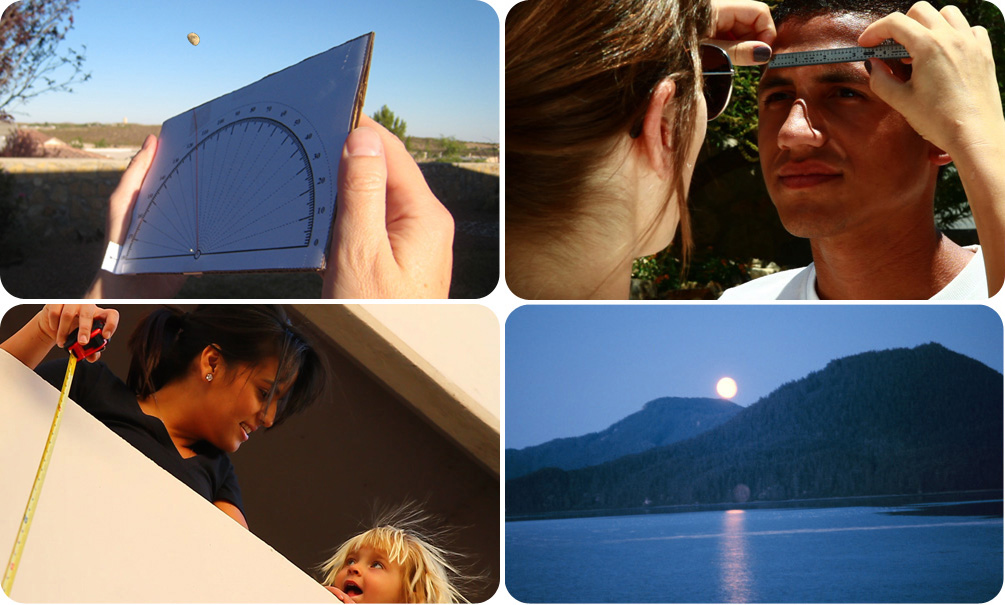GEAS Project Laboratory Exercises

Welcome to the GEAS project development site for astronomy laboratory exercises. We are creating laboratory science materials for distance education college students, those who study outside of the traditional classroom at times and in places that work best for them.
We create opportunities for hands-on learning, through physical experiments that can be done with common household items (combining pins, needles, measuring tape, and a little elbow grease). Students also conduct their own analyses of astronomical images and spectra for planets, stars, and galaxies taken with telescopes from all over the world, including space-based instruments like the Hubble Space Telescope and spacecraft like the Mars Odyssey Orbiter which have traveled to nearby planets and moons.

We build our own sextants from cardboard, paper, pins, and thread, and track the movement of the Moon through the sky around the Earth. We measure the distances to nearby objects employing the parallax technique used to estimate the distances to the stars surrounding us in the Milky Way galaxy, and then take a giant step outward to discover how far away other galaxies lie. We also study the evolution of individual stars, and then observe how these patterns determine the stellar populations which make up the bulges, disks, and stellar halos of spiral and elliptical galaxies.
These exercises can also be conducted in a traditional classroom setting, or used to support outreach activities.
You will find here all of the materials necessary to begin each exercise, including PDF documents outlining the exercises and HTML links to relevant web sites and web applications. Read through each exercise, and then watch the associated video tutorial to get some extra advice on how to conduct the experiment.
Please note that all of our tools that were originally written in Flash are also available in HTML5; there are none that require that Flash be used. If you are trying to work with a Flash-based version that you have used in the past, we strongly recommend that you adopt the current HTML5 version instead.